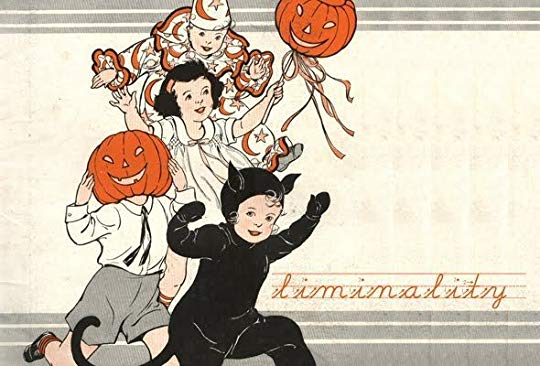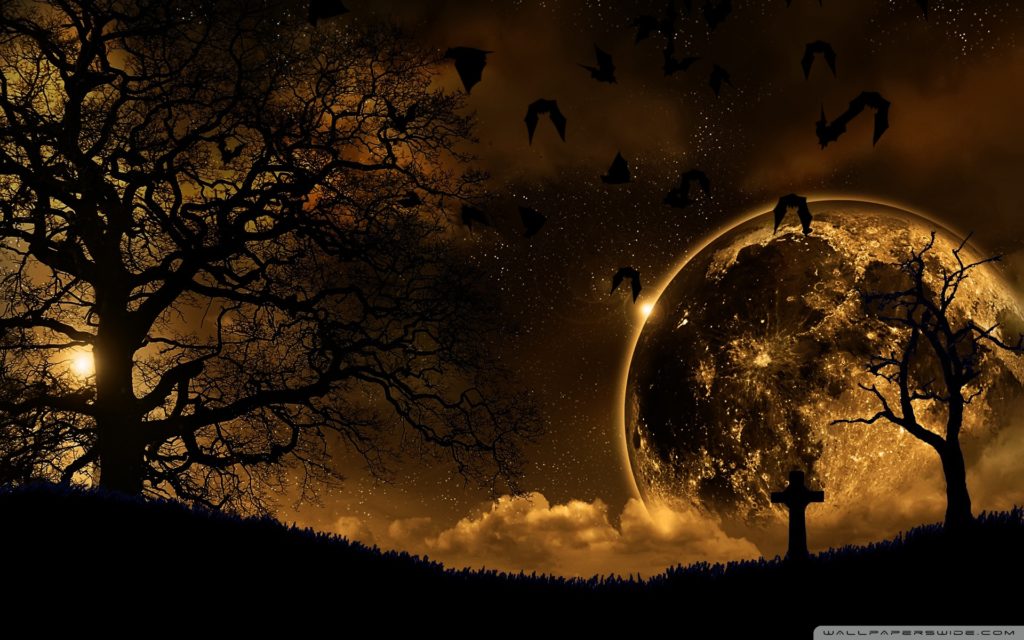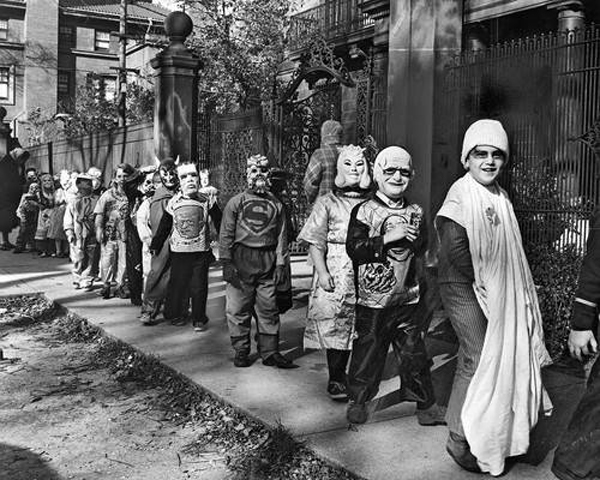Just this morning I was reading a Facebook post from my friend Yow Man Chan. If his name is familiar to you it may be because you remember him winning on Survivor a few years ago. Born in faraway Borneo, he has successfully adjusted to most aspects of American pop culture. But he admits he has yet to understand Halloween. What is the point, he asks, of adults having fun scaring children?
Plus, I think of the Seinfeld episode in which Kramer gets fed up with all the junk mail and tells the Post Office to stop delivering his mail. Not only that, but he campaigns to get others to do the same. He raises enough of a ruckus that he comes to the notice of the government. One day he is “invited†to a clandestine sit-down with the Postmaster General (played by Wilford Brimley), who turns out to be affable but formidable. He chuckles as he says he can see Kramer’s point: it does seem a bit silly to have an army of letter carriers in woolen pants fanning out across the city—but the mail service must go on.
Applying it to Halloween, it also seems pretty peculiar to send forth a horde of costumed children onto the sidewalks, ringing doorbells and collecting candy from householders most of whom they do not know and who do not know them, especially since they are swathed in special vestments they will not wear for another year. Why do the neighbors feel obliged to distribute candy to these little hooligans? Ostensibly, of course, it is extortion. Adults must hand over the treats if they want to avoid the threatened “trick.†Just like the Christmas scenario depicted in the song “We Wish You a Merry Christmasâ€: What do the carolers sing to their expected benefactors? “Bring Us Some Figgy Pudding…, and bring it right here…. We won’t go until we get some.†Uh, sure! Sure! Be right back with it in just a second! Sometimes the revelers (some of whom are not children) graduate to out-of-control rioting, and this is what got Christmas outlawed in England for some years!
Somehow, in some parts of the country trick and treat have been reversed in sequence. This happened when Halloween was split into Mischief Night (what you might call “Halloweeneen,†i.e., “the Eve of the Eve of All Saintsâ€) on October 30 and Halloween on the 31st. Mischief Night is the night of chaos and pranks. There is not even the element of a protection racket that is theoretically the whole premise of Trick or Treat. The pranksters expect no treat and you know there is no opportunity to buy your way out of the TP-ing of the trees in your front yard. While you might expect the pranked householders to respond, “Okay, you rotten brats! If that’s the way you want to play it, I’ve got a little trick of my own! No candy for you!†But that’s not going to work because the Mischief Night mayhem is meant to demonstrate the severity of the Halloween threat the next night! “You want more of this, Mr. Wilson? It can get worse, much worse!†And then the householder falls victim to the Stockholm Syndrome and, smiling nervously, forks over the candy to the infernal little Jehovah’s Witnesses.
What is the religious significance of Halloween? The original (Irish) occasion was called Samhain (pronounced Sah-win). It was the night of the year when the spirits of the dead penetrate the veil separating the world of the living from the realm of the dead and return to manifest their spectral forms to those they left behind (cf. Matthew 27:52-53). This smacks of ancient ancestor worship: giving out candy is an offering to the wandering shades of our ancestors, still reflected also in our practice of leaving flowers on their graves. Today’s flowers are the counterparts of the food once left atop the graves. And of course, any neglected ancestor would call down misfortune upon his or her neglectful descendants. These are reprisals: the “trick.â€
The big difference between Samhain and our Christian Halloween is that the roaming spirits are no longer our ancestors but rather our descendants, our kids. When All Hallows Eve (the Eve of All Saints) replaced the pagan Samhain, the arrival of the shades of the dead became the Communion of the Saints. But eventually the meaning evolved further. As perfectly depicted in Walt Disney’s Fantasia, when demons vomit forth from the mouth of Hell to revel and rejoice in their freedom, only to be consigned there again once the sun comes up. The point here is that rampant evil may gain freedom and mastery, but it cannot last. Divine Grace will appear, no matter how dark the depth of the Night. Halloween is thus the darkness before the dawn. And this means that the haunting spirits are no longer the familiar forms of the dear departed. Rather, they are menacing demons. Â
Halloween, then, marks the thinning of the veil between worlds. We no longer take that literally. But demythologizing it does not destroy the symbolism. Now it denotes the penetration of the barrier between the mundane world and the fantastic imagination. For one night each year one dons a costume, revealing an alternate version of yourself, showing the “real†you or the identity you wish you had. Trick or Treat is a rite of revelry but also of transformation, albeit temporary. Temporary because it is not viable to live in the workaday world as a monster, a pirate, a space alien, a superhero, etc. But “letting it all hang out†provides the opportunity to embrace the fantastic, dream-version of you. It’s a reinvigorating vacation from the civilized, respectable, boring, adult you.
 It is this ritual, liminal character of Halloween that explains the transgressive nature of the whole thing. Liminality is the element governing rites of passage between two stages of life. There are rites of transition from childhood to adolescence, from adolescence to adult marriageability, then into matrimony and to vocational certification, to retirement, and finally into the hereafter. The rituals are meant to facilitate each transition successfully. They do this by initiating the individual into the borderline condition itself for a very brief time. While passing through this mini-zone, one flouts the rules that govern behavior in the stages from which the initiate comes and that into which he is entering. One example is sacred homosexuality and sex with partners ordinarily off limits. Another might be the consumption of ritually unclean foods. A modern, “secular†example would be the bachelor party. His fiancée can/has to forgive her intended’s one-night binge of debauchery. “What happens in Vegas stays in Vegas.†You get the picture.  Â
It is this ritual, liminal character of Halloween that explains the transgressive nature of the whole thing. Liminality is the element governing rites of passage between two stages of life. There are rites of transition from childhood to adolescence, from adolescence to adult marriageability, then into matrimony and to vocational certification, to retirement, and finally into the hereafter. The rituals are meant to facilitate each transition successfully. They do this by initiating the individual into the borderline condition itself for a very brief time. While passing through this mini-zone, one flouts the rules that govern behavior in the stages from which the initiate comes and that into which he is entering. One example is sacred homosexuality and sex with partners ordinarily off limits. Another might be the consumption of ritually unclean foods. A modern, “secular†example would be the bachelor party. His fiancée can/has to forgive her intended’s one-night binge of debauchery. “What happens in Vegas stays in Vegas.†You get the picture.  Â
Halloween is a night of liminality. One does not pull nasty tricks on other nights than Mischief Night, because one knows that is the only night one can get away with it. And one can get away with on that night because it is a night of liminality. Modern entertainments premised upon liminality are the Star Trek episode, “The Return of the Archons,†in which Kirk and his buddies beam down to a world whose civilization allows a daily “Red Hour†in which all manner of wild and lascivious behaviors are allowed as a kind of pressure valve for a population otherwise living in Puritan passivity. More recently, there are the Purge movies. So the concept should not be completely unfamiliar.
On Halloween, liminality is expressed in candy-coma gluttony for kids and in drunken excess for parents at party-time. But more significant is the freedom of children to present themselves in the likeness of evil and horror: devils, ghosts, slasher movie anti-heroes, witches, werewolves, etc. But isn’t that unwholesome? Shouldn’t that be discouraged? Many parents and costume manufacturers seem to think so. This is to miss the crucial point. Halloween is no mere “Come as you aren’t†costume party. Jung must have understood this: each of us possesses a Shadow, the part of the soul that participates in evil. One cannot simply exorcize it. Henry Jekyll (like John Wesley) thought he could do that, but Jung could have told him what must happen next. Your Shadow side is not going anywhere, though it may seem you have vanquished it. Rest assured, it is still there, percolating, festering, gaining in strength until, once a weak spot in your moral armor manifests itself, the dam bursts, and the freed Shadow makes up for lost time. To avoid that outcome, one manages the Shadow. Halloween is an occasion for us to do that: to indulge evil as harmless role-play. That defangs evil. I don’t mean that Hitler would have turned out okay if he’d gone Trick or Treating in Austria as a kid. I’m just talking about most people most of the time.
Pardon me now, as I open another bag of peanut butter cups. And Happy Halloween to you!
So says a guy in a Zarathustra costume.
  Â




One Response to The Thinning Veil